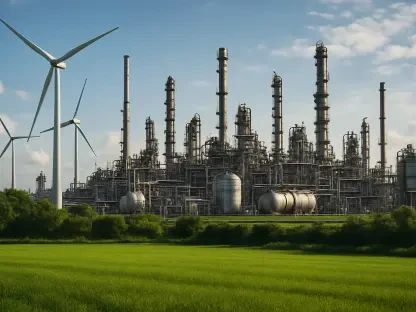The energy bills for electricity rise staggeringly in regions connected to PJM Interconnection, painting a perplexing picture. Predicted to surge over 20%, these costs prompt inquiries into the underlying causes. As advanced AI and extensive data centers continue to weave into daily operations, their burgeoning demand raises questions about their impact on America’s largest power grid.
Balancing Act in a Vast Territory
PJM Interconnection, covering 13 states and servicing 67 million people, stands as the backbone of energy distribution in a diverse region stretching from Illinois to Virginia. Given its vast scale, the grid directly influences electricity reliability and affordability for countless consumers. The complexities grow as PJM navigates the crossroads of evolving state energy policies, technological advancement, and escalating demands.
Dynamics Behind Soaring Demand
PJM’s annual capacity auction unveiled a dramatic leap, with electricity prices shooting up by over 800%. This spike is partly due to the retiring of antiquated power plants amidst accelerating needs, especially from Northern Virginia’s “Data Center Alley.” Over the last decade, PJM encountered a reduction of 5.6 net gigawatts, signaling how the deceleration in new power plants matches the retirement of older facilities, underscoring the strain on supply.
Expert Opinions on Operational Hurdles
Voices from energy attorneys, power developers, and state officials echo criticisms of PJM’s operational procrastination. Notably, Pennsylvania Governor Josh Shapiro’s warning to exit PJM, unless improvements are swiftly made, symbolizes rising discontent. In this turbulent context, the resignation of PJM CEO Manu Asthana adds to the management challenges, stirring concerns about stability within the organization.
Initiatives to Bridge Energy Discrepancies
PJM’s response includes reforming the auction process and adopting semi-annual auctions to introduce more flexibility. Price caps on auction bids and faster processing of power project connections highlight their tactical moves to alleviate demand pressures. Despite these steps, the effectiveness of these solutions evokes mixed reactions, prompting consideration of innovative strategies such as enhanced energy storage and advancing interconnections.
Navigating Towards a Sustainable Future
Consumers, regulators, and energy stakeholders now face the mounting burden of increasing energy costs. Practical measures like energy conservation and advocating for robust policies may partially mitigate these rising expenses. Looking ahead, engagement with policymakers to prioritize investment in grid infrastructure and promote sustainable practices emerges as crucial. Although PJM grapples with significant challenges, these steps offer a pathway for ensuring long-term energy efficiency and stability throughout the expansive grid.









